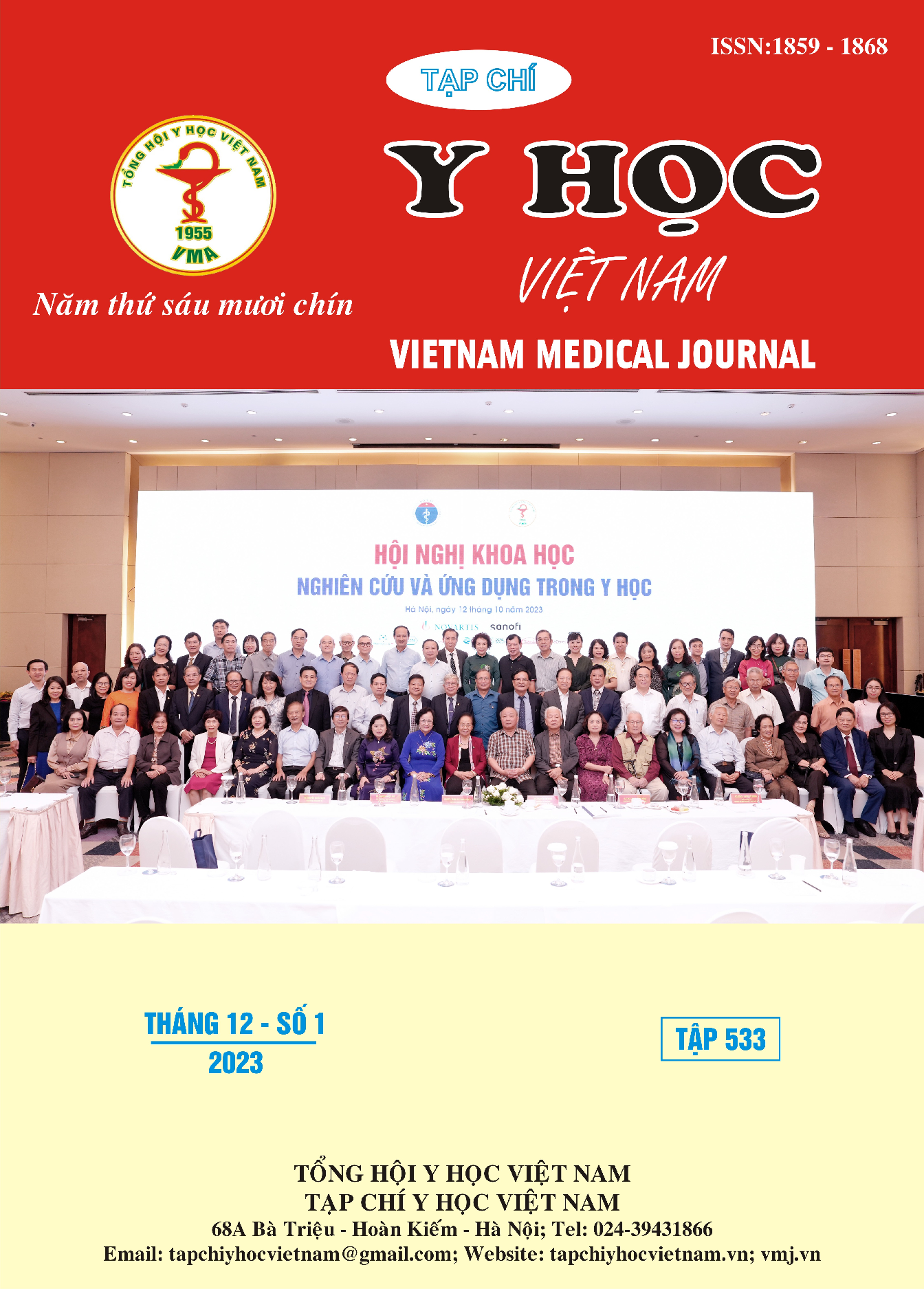SURVEY ON CHANGE OF SKIN SURFACE TEMPERATURE WHEN APPLYING ACUPUNCTURE AT ZHONGZHU (TB-3) ACUPOINT: A PILOT STUDY
Main Article Content
Abstract
Objectives: In this study, we assess whether there is or not a change in the skin surface temperature at the acupoint and the skin region belonging to the Triple Burner meridian (pi bu) when applying acupuncture at Zhongzhu (TB-3), a stream acupoint of the Five transporting (Shu) points, based on the “clearing meridian Qi obstruction” effect of this point. Materials and Methods: A no controlled group pilot study which examine 30 volunteers at the Acupuncture Experimental Research Lab of the Faculty of Traditional Medicine at the University of Medicine and Pharmacy at HCMC. The skin temperature was measured on the dorsal of hands and forearms by an infrared thermal imaging camera at the time points before, during, and after applying acupuncture at the TB-3 acupoint. Results: The skin surface temperature at TB-3 acupoint and the skin region belonging to the Triple Burner meridian increased significantly between the time points before, during, and after applying acupuncture (p = 0.0012 and p = 0.0005). In contrast, the skin surface temperature at the skin not belonging to the Triple Burner meridian did not change significantly between the time points before, during, and after applying acupuncture (p = 0.5753). Conclusions: We found that acupuncture can change the skin surface temperature at the applied acupoint and the corresponding meridian specifically. That is suitable to the meridian theory and the “clearing meridian Qi obstruction” effect of stream points.
Article Details
Keywords
: acupuncture, stream point, skin temperature.
References
2. Vũ Thanh Liêm, Trịnh Thị Diệu Thường. Khảo sát sự thay đổi nhiệt độ da vùng thắt lưng khi châm tả huyệt Ủy trung thuộc nhóm lục tổng huyệt. Y học thực hành. 2017; (7): tr.107-109.
3. Trịnh Thị Diệu Thường. Châm cứu học 1. NXB Y học. 2018: tr.23-32.
4. Allen J, Mak SS, Begashaw M, et al. Use of Acupuncture for Adult Health Conditions, 2013 to 2021: A Systematic Review. JAMA Network Open. 2022; 5(11): e2243665.
5. Focks C. Atlas of acupuncture. Elsevier. 2008: pp. 24, 369.
6. Huang T, Huang X, Zhang W, et al. The Influence of Different Acupuncture Manipulations on the Skin Temperature of an Acupoint. Evidence-Based CAM. 2013; 2013: 905852.
7. Maciocia G. The foundations of Chinese medicine: A comprehensive text. Elsevier. 2015: pp. 829-843.
8. Whitehead Amy L., Julious Steven A., Cooper Cindy L., et al. Estimating the sample size for a pilot randomised trial to minimise the overall trial sample size for the external pilot and main trial for a continuous outcome variable. J Stat Meth Med Res. 2016; 25(3): pp.1057-1073.


